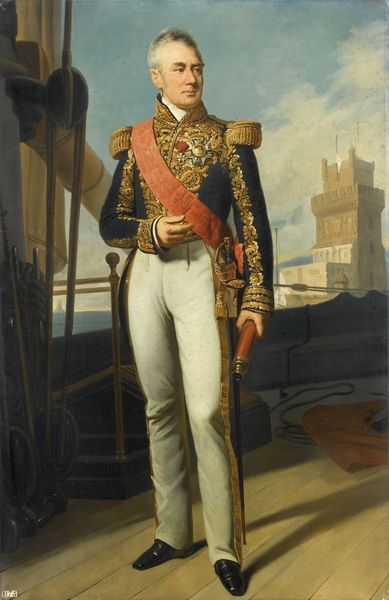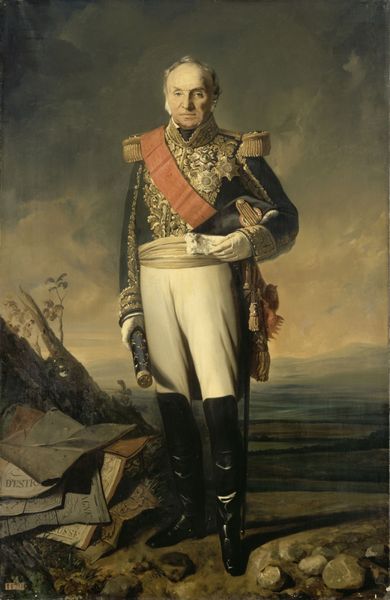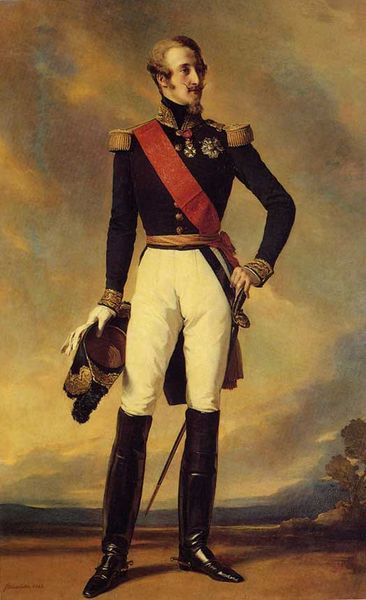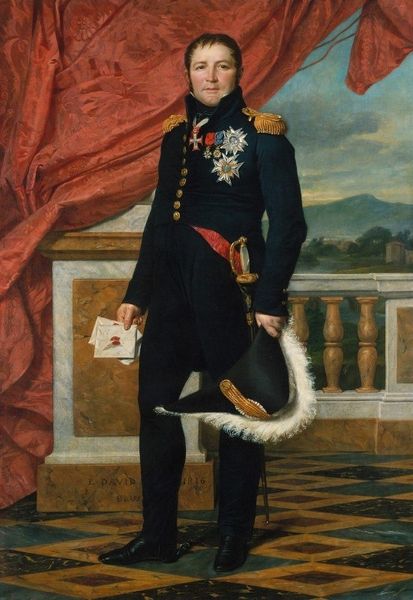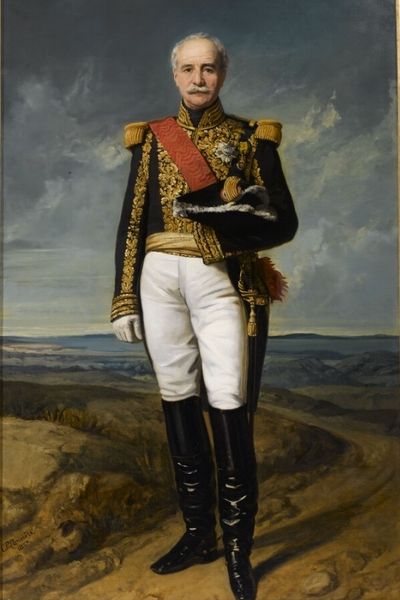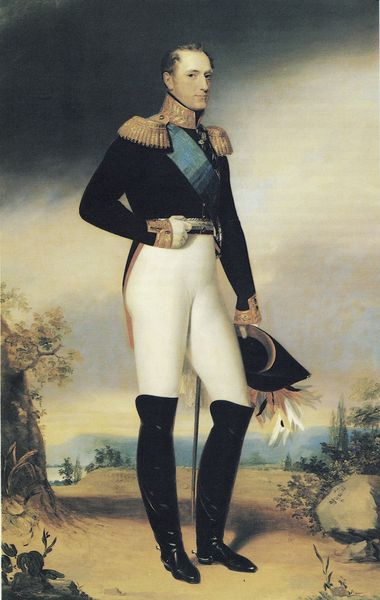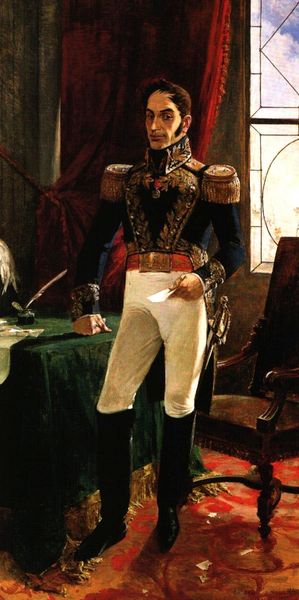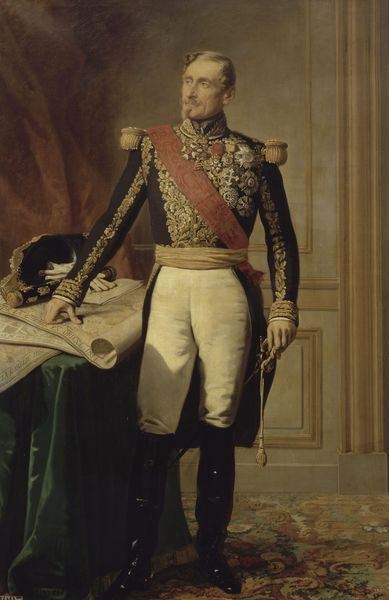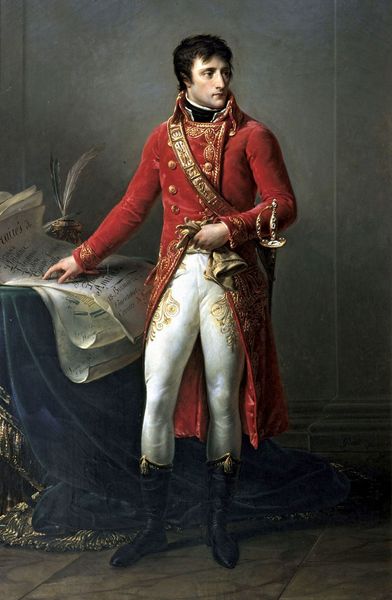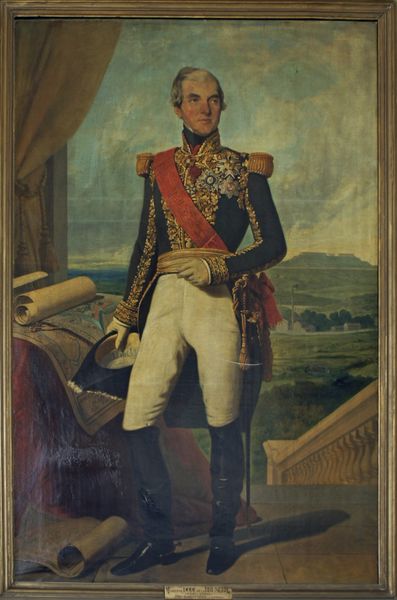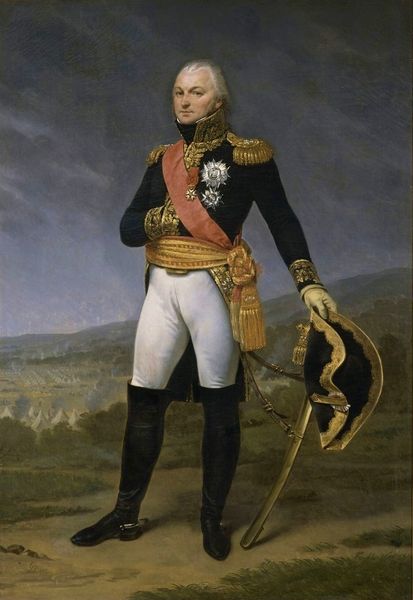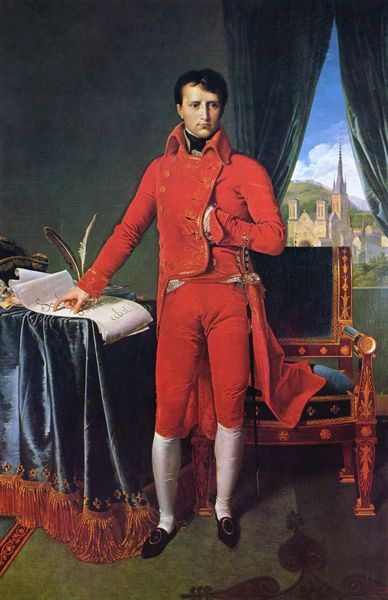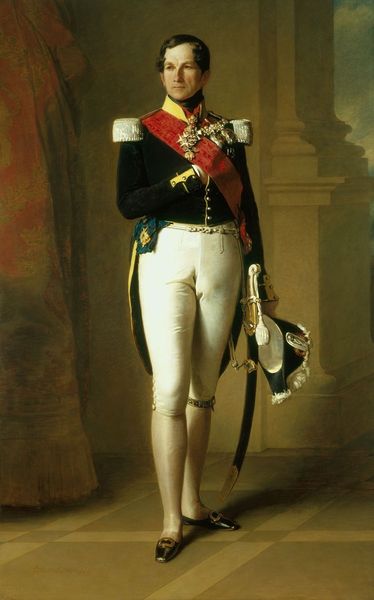
painting, oil-paint
#
portrait
#
painting
#
oil-paint
#
romanticism
#
history-painting
#
academic-art
#
realism
Dimensions: 218.5 x 142.5 cm
Copyright: Public domain
Curator: Looking at this portrait, there is a clear desire for controlled, confident representation. Editor: It definitely has a feel of old-fashioned glory, right? I find myself looking at that strong gaze, the imposing stance, but my eyes keep wandering to the blurry backdrop... it unsettles the hero narrative for me. Curator: I'm glad you pointed that out. What we have here is "Thomas Bugeaud," an 1845 oil painting by Charles-Philippe Larivière. Editor: Bugeaud, a prominent French marshal... That context shifts my perspective a bit. All that detail in the uniform tells us about the figure's status. Curator: Absolutely. The portrait speaks volumes about 19th-century French society's relationship with its military leaders and, specifically, colonial exploits. The Romantic undercurrent combined with realism suggests both a heroic depiction and a desire for accuracy. I can almost see it in an official government building in that period, which reflects well on Lariviere as an artist who navigates social dynamics. Editor: Seeing it today, though, one cannot ignore that historical framework that praises him was made in times of conquest. The tents in the background – do they denote an Algerian landscape and Bugeaud’s involvement there? The romantic and idyllic image feels so far away from realities of colonial power. The sword he holds symbolizes that power so subtly. Curator: Precisely. Larivière captured an individual entangled within the narrative of power, prestige, and colonialism. This art reflects Bugeaud's personal ambition and his instrumental part in the July Monarchy’s colonial actions. What is even more striking is how that palm, at left, and that agave plant at right serve to both emphasize a landscape we recognize as foreign but exoticize what turns out to be not a backdrop but a site of historical contestation. Editor: It serves as a crucial reminder to think intersectionally. Larivière isn’t simply showing us a man; the art gives rise to discussions around representation, agency, and political ramifications that art might imply. Curator: Definitely. That tension is exactly what makes it a valuable lens through which we can examine not just French history, but also our own biases and interpretations. Editor: I'll leave seeing with much to rethink of my perception then!
Comments
No comments
Be the first to comment and join the conversation on the ultimate creative platform.
